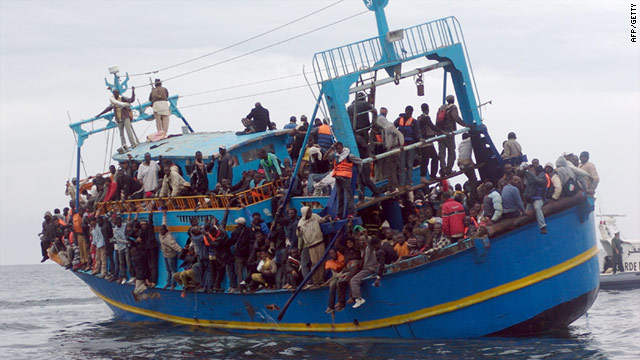At the start of the 20th century, almost 75% of the world’s land surface was subject to either direct colonization or some form of protected status. Africa and Asia were the private dominion of colonial powers with millions living and existing under the boots of pernicious colonial control relegating them to servitude, bondage and treated as mere ‘beasts’ of burden. At the time a traveler would take a journey from Africa’s north to the south then east to west he would find that all territories were colonial possessions to the British, French, Dutch, Portuguese, German, Italian, and Spanish with only few areas experiencing any type of independence, self-determination or freedom.
Movement of raw materials, rendering services and cheap labor was the task assigned to populations in the colonies by European powers. The pillaging of the Southern hemisphere was systematic, structured and total leaving nothing untouched in the process–human, rocks or trees. As the world commemorates the 100th year anniversary of WWI, we must be reminded of hundreds of thousands of troops recruited from the colonies to fight imperial wars and sacrificed themselves to protect and defend one European colonial power from another. This, while the colonial subject was not equal to a European or in reality even considered full-human during this period. The colonized subject was used as a fighting force, at the same time, brought to inhabit the human zoo spaces within the European capitals to be publically gazed upon and touched as uncivilized and sub-human.
The end of WWI did not bring peace to the global South or end the colonial project itself; rather, it was granted further legitimacy under the newly formed League of Nations and the paternalistically crafted Mandate powers. As a matter of fact, the colonial footprint was expanded and incorporated a vast swath of lands in the Arab World to French and British possessions. The region currently named the Middle East was born, borders drawn and the Palestinian dispossession was facilitated by colonial powers during this period. Likewise, Africa and Asia witnessed further entrenchment of the colonial project and forced a voluntary movement of populations across the globe, as well as intense demands for raw materials and labor to rebuild Europe.
One way to view the dispossession of the Palestinians is to think of it as a process of forced removal of Jews from Europe and Arabs from Palestine, which was facilitated by colonial logic and strategic planning. The forced removal of Jews from Europe coming on the heels of an intense period of anti-Semitism in Eastern Europe, England and France–with the Dreyfus Affair being a paradigmatic representation of the time and making Zionism a logical solution to escape the continent intensification of otherization, bigotry and racism. England on its part and other European powers acted purely from a strategic and racist consideration in supporting the creation of a Jewish state. On the one hand as a buffer to protect British colonial possessions in Egypt and trade routes, and on the other removing the undesirable Jews from Europe. In this context, the dislocation of both Jews and Palestinians and setting them on a clash course against one another to serve a larger colonial project is at the heart of what was set up in the newly colonized region.
The Second World War witnessed similar and just as massive forceful movement of human beings which featured the Holocaust as the Final Solution to Europe’s permanent and persistent other: the Jew. As such, the Holocaust represents a European norm if one locates the centrality of racism directed at Jews for being Jews and going back even to the period before the expulsion and Inquisition. The actual war effort included moving colonial subjects from the colonies and into the battlefields to fight and defend European powers from each other with hundreds of thousands dying a nameless and faceless death, since they belonged to the realm of non-being and the sub-human. The movement continued after the war ended as many from the global South were brought into the North to rebuild destroyed cities and economies while having to contend with constant otherization, racism and xenophobia.
Anti-Colonial Struggles
The anti-colonial liberation struggles took shape in the late 1950s and throughout the 1960s with most of the countries in the global South gaining the right to political self-rule but not economic or epistemic self-determination and independence. Certainly, the new countries declared independence, had a new flag, national stamp, ruling assemblies and all the trappings of imagined power, but the economy and the resources remained in colonial hands or in the hands of the carefully selected and nurtured elite who acted as a middleman and manager of the colonial sub-contract. In this regard, the newly minted post-colonial independent states acted more like a franchise when it came to economic and wealth distribution. The colonial powers left behind a whole set of constraints and control levers that were intended to keep the raw materials flowing northward while continuing to find ways to expand the levels of structural dependency.
The 1970s oil crisis created much bigger and deeper economic problems for the post-colonial and newly independent states by unleashing a massive global inflation crisis that devalued currency, raw materials and other segments of the economy. In addition, the rising cost of oil made it impossible to carry on normal economic activities and caused governments to increase or institute massive subsidies for fuel, electricity, food commodities, healthcare and education. While some of these subsidies existed prior to the oil crisis; nevertheless, the level of price support and government’s expenditures increased so as to keep the lid on possible protests and also to prevent internal political opposition from exploiting the economic weakness to push for radical change.
A side and a critical effect of the petrodollar phenomena is the role played by banking institutions in the global North in fomenting the global debt crisis as a way to unload the massive liquidity deposited by oil producing countries and petroleum companies and made its way into their volts by the billions. As oil prices shot up and with it a massive increase in deposits coming from oil producing countries the banking institutions were facing a major crisis with needing to pay out more interests on deposits with no end in sight. Banks make money when they sell loans and have others pay the interest to the bank, rather than the other way around. When you deposit your money into your account the bank enters it as a liability on their books and it can be changed into an asset once it is loaned out to others and many times over then it can serve the purpose as an asset. The banking industry went into overdrive and set in motion one of the most aggressive global loan sales initiatives to unload billions of deposits and transform them into revenue generating loans.
IMF and World Bank: Destructive Adjustment Programs
The post-colonial third world was a primary target for unloading these deposits. Loading up the newly independent post-colonial states with billions of dollars worth of debt meant achieving deeper levels of economic control, coupled with the already corrupted elites, made for dismantling any prospects for freedom, dignity and a future with fair and just economic opportunities. Debt salespersons were sent across the global South to search for loan opportunities and to look for funding big ticket items and projects that can unload massive amount of petrodollars in the quickest way possible.
No attention was paid to the viability of the funded project or whether the country had even the capacity to undertake such a project since the sole driving force behind all of it was to unload the cash and make it someone else’s responsibility to pay the interests on it. The colonized elites were over joyed with the flood of cash coming their way and were more than happy to play along since it meant a bigger and fatter commission or at times outright stealing of all but few dollars spent on decorative and ceremonial projects. Often, the same banks that made the loans in the first place assisted these colonized elites to funnel the money back into secret accounts in Swiss or other global north financial institutions while taking a cut for services rendered.
The debt crisis of the 70s and 80s transformed the post-colonial state into effective financial prisoner to banking and financial institutions of the global North. Consequently, the recently independent post-colonial state lost all control and was placed under direct receivership of the global North financial system. The strategy called for sending to the South none other than the IMF and the World Bank, the bouncers and economic enforcers for the global financial system, who made sure that the debt was being paid while all other internal services and subsidies were cut to the bone. The IMF and World Bank acted to protect the global North banking interests at the expense of the post-colonial South. The IMF mandated Structural Adjustment Policies, which were the tools utilized in the post-colonial period to achieve maximum dependency and control over economies of global South.
Having sold loans to impoverished countries, facilitated wealth transfer for the elites who signed the documents, the banking industry then sent its well-dressed henchmen and global bouncers, the IMF and World Bank, to break the metaphorical legs of the population and extract payments by any means necessary. The Structural Adjustment programs called for: increased export of raw materials to bring hard currency to pay for the debt, liberalize and privatize the economy, reduce or totally remove government regulations that prevent foreign control or ownership of assets, currency devaluation while ‘recommending’ connecting it to the dollar, encourage foreign investment in mines, raw materials, agribusiness and tourism, and topping it off by cutting governmental support for education, healthcare, price support for food staples (like wheat, corn, rice, and beans) and social services. These adjustment policies collectively worked to further ruin what was little left of the ability of post-colonial populations to sustain a livelihood and a dignified life.
The increased export of raw materials by the global South created a flood of commodities in the market thus collapsing prices and reducing the hoped for foreign currency returns. Such a policy recommendation was intended to help the global North and reduce raw material costs for the manufacturing base while increasing the rate of exports directed to the post-colonial South. Furthermore, the privatization and liberalization policies made it possible for the multinational corporation to devour what little was left outside of their control and managed to buy out and disrupt any small and incipient economic base in the global South. These plans should be correctly named Destructive Adjustment Programs that manage to reassert a deeper colonial control in the post-colonial period, which likewise, results in another massive wave of immigration and dislocation from the South.
Instead of reducing dependency, the IMF and World Bank deepened the crisis and effectively became the real power in countries that were put under these adjustment programs. Dependency on the global North affected every part of the economy with the sole focus directed at paying the debt and enabling the global banking institutions to transfer wealth again from the global South to the global North. What started during the colonial period reached its pinnacle in these adjustment programs as post-colonial independent countries were tasked with implementing sweeping policies that again delivered the country’s economy and society to the ex-colonial motherlands without questions asked.
Again the colonially trained elites were in bed during the whole process and got paid handsomely by getting the country into debt, managing the privatization and using might and power to keep the population in line. Protests and popular mobilizations in the South were expected and prepared for jointly with the IMF and World Bank as a way to break the backbone of any movement that might challenge or alter the recommended policies. The corrupted, colonially nurtured and paid for elites deployed maximum force and power to crush opposition, which was part of the policy and not an unplanned for anomaly in the implementation phase. The protests and violence were used to extract even deeper concessions from the elites and then committing whatever remaining resources to bolster the military, which was supplied, trained and designed to protect the global North economic interests at the expense of populations in the South.
Employing maximum violence, targeted assassination and sending activists and intellectuals to exile crushed the opposition and enabled the global North corporations and financial institutions to purchase further assets at an even much lower and discounted prices than market value for these assets.
The bankers and colonial motherland policy makers came up with even more insidious plans to shake the pockets of the post-colonial South by introducing what is known as Debt for Equity Swap framework. Debt for Equity Swap amounted to one of the most sophisticated and civilized international thievery produced, directed and acted on the world stage by faceless and nameless suits and ties sitting in offices and country clubs in the global North.
It should be called death for equity swap for it squeezed the last drops of hope and life out of populations by robbing them of their property during daylight hours on national TV and for all to watch. Each country that owed money and was indebted to the banks because of loans taken and signed for by presidents, ministers and elites in the global South was forced to surrender its assets. The debt for equity swap deals were worked out and planned by governments and banks in the North whereby states in the South had to give up their gold mines, rain forests, natural resources, water and telephone companies, and vast agricultural lands to pay back for the bad and ‘un-performing’ loans.
The debt for equity swap was the death nail if any was needed to completely re-colonize the global South, but in this case, the focus was on tangible and fixed assets without having to deal with anything else. In the earlier period, the colonial troops had to be on the ground, military equipment, running prisons, administration etc. but the more new revolutionary and improved colonial project in the post-colonial structure removed any costs for control and domination and shifted it to the local managers who are paid a contractual fee to oppress and sell their country and soul to corporations and banks in the global North and to the ex-colonial motherlands. Post-colonial states and the global financial structure made it possible for the global South to actually subsidize its own dispossession. As ownership of the assets is moved to the global North then all internal economic activities became even more regulated by the needs and demands of multinational corporations running the global market.


